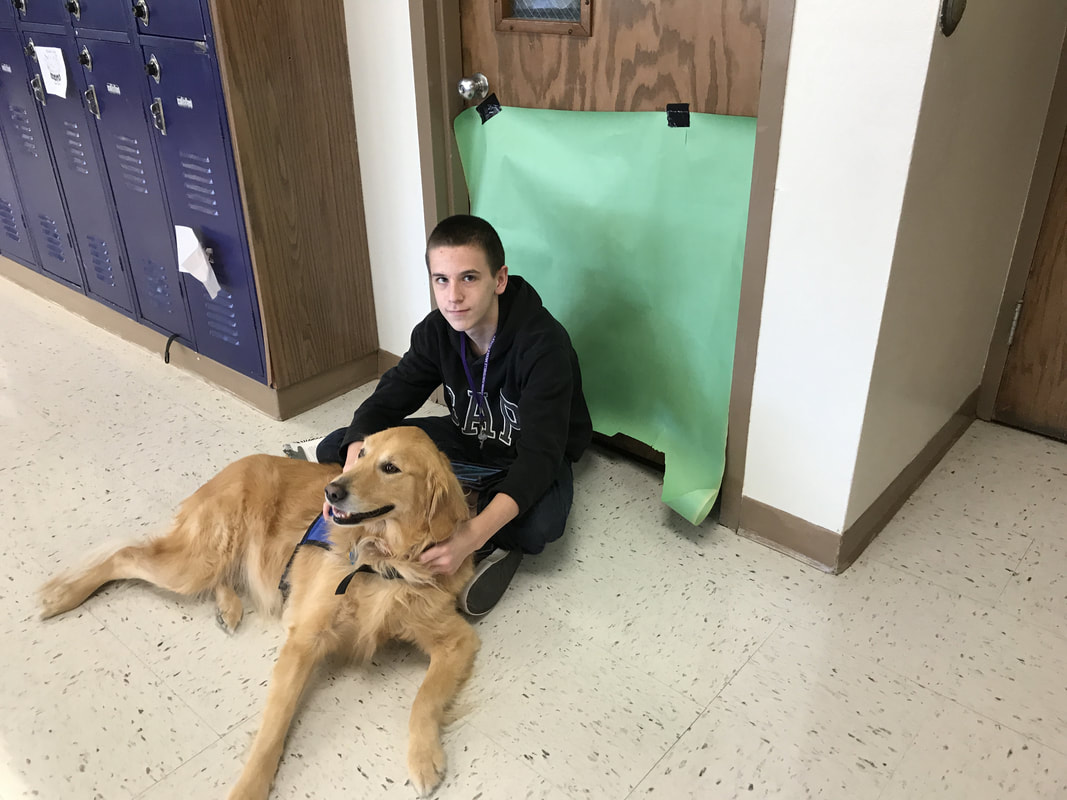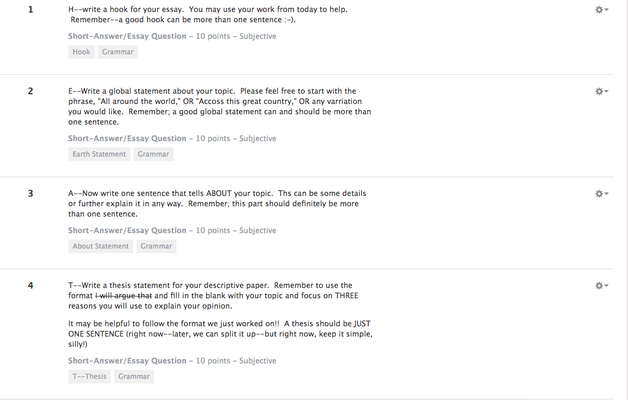|
Last night was interesting. My youngest son had a "bad day" at school (50 percent on his behavior report, argument with the teacher, lots of tears, and reading a book he doesn't like). It was then, as my husband and I tag teamed dinner, homework, and his paperwork that I realized exactly how much my co-teaching relationship is similar to the way my husband and I co-parent. I am lucky in that I have two co-teachers, Kami Truax and Kali Truax. Kami is one of the most outstanding special educators I have met. She knows her stuff and is alway willing to go the extra mile for our students. Kali is Kami's service dog. She spends most of her time in my class getting belly rubs and comforting all of us in our day to day trials in middle school. I will admit, I visit Kali for comfort about as much as the kids. Last night at Leadership Academy, we were lucky enough to host Dr. Matt Fenster who is the director of Special Education here in Bellevue. He nearly knocked me out of my chair with one fact. IDEA is [t]he Individuals with Disabilities Education Act (IDEA) is a law that makes available a free appropriate public education to eligible children with disabilities throughout the nation and ensures special education and related services to those children.). Pretty much, that means that our special education mandates come from the federal government. The problem is that the federal government has simply said that the states have to pay for this. The states have no money. for this expense; therefore, our budget for special education was only funded at 56 percent last year. The rest of the money came from the district. This is the epitome of an "unfunded mandate" and it is attacking the most vulnerable of our society. That just stinks and, quite frankly, depresses me to no end.
However, there are people out there working here and across this great nation to help special needs kids achieve and succeed. I should know. Two of my babies qualify for SPeD services and I couldn't be prouder. They are getting the help they need to achieve as much as they humanly can in life. The districts are doing this at a tremendous cost, but the benefits are exponential.
0 Comments
"I have a birth defect--no herd instinct."My mother used to tell me that the quote above was from one of the first women arrested for wearing an "unauthorized" bathing suit to a public pool back when women did not do such things as show their ankles or wrists. Unfortunately, (as we have spent the last three weeks on expository essays), I cannot verify that source. Regardless, the quote has always resonated with me. With that in mind, I'd like to share something my last handler (shout out to Jeffrey Bernadt--@jefferybernadt) said was unique about how I set up Schoology to grade introduction and conclusion essays. Using the test feature in our learning management platform (LMP), I set up four questions to count as the rough draft of the introduction paragraph of our essay essay (which is expository this time). We use a system I call H.E.A.T. (Hook, Earth, About, Thesis) as a pneumonic to remember the sentences we need to have somewhere in the opening paragraph. Most of you writing people will know that the hook is there to reel in the audience (attention getter) and the thesis is our argument plus essay map. Earth means they need to have a global appeal in there, making their reader feel a part of the issue. I use the example, "All around the world, people need ______" as a template to show that their topic is universally critical. The about statement is the literal definition of the topic. As you can see from the grayed out boxes under the questions, each sentence (or set of sentences) that they write then goes up against a rubric. The rubric judges two things--does the statement they wrote do what they were asked (is it a hook? is it a thesis?). The second box is grammar. If there are any grammar mistakes in the answer, they do not get points for the grammar component of the sentences.
Considering that I always invite students to redo their work for a better grade, I find this system pinpoints the potential problems or successes of their sentences. This leads to less confusion about why they received the grade they did and better understanding on how to fix it. They know immediately from looking at the rubric if they need to work on content or grammar (or both) in their next submission. I will not suggest that this method of grading saves time; however, it does save a good bit of my sanity by having the bulk of the "why didn't I get a 100 on this?" questions taken care of without personal interaction with the student or handwritten notes/emails. |
Archives
April 2024
Categories |
 RSS Feed
RSS Feed



